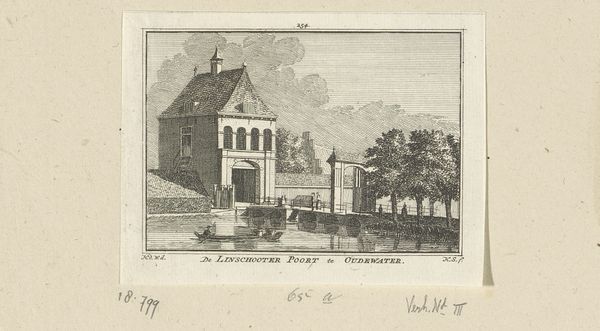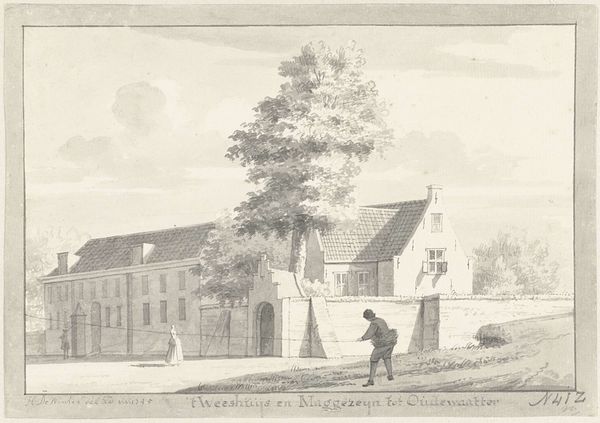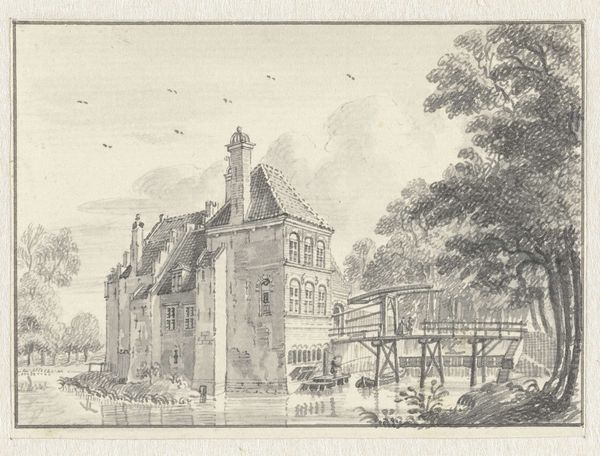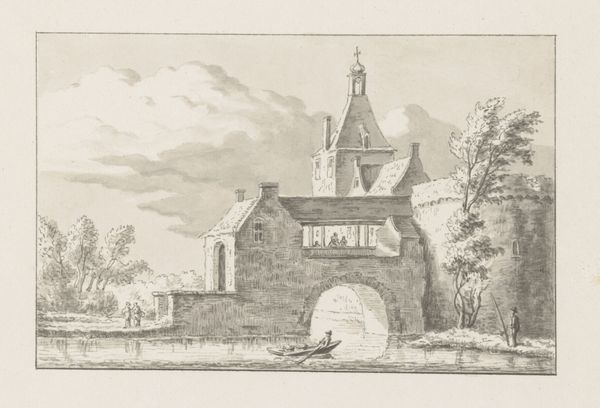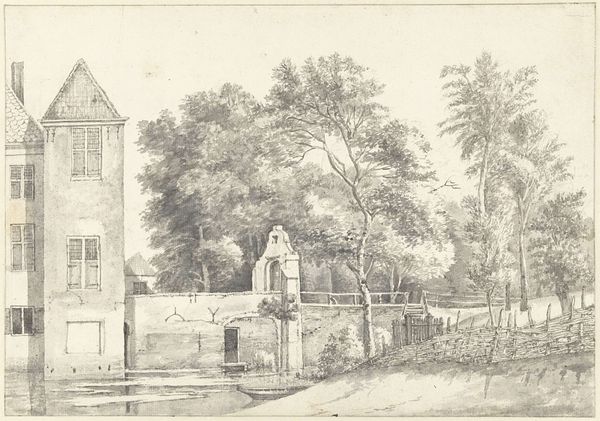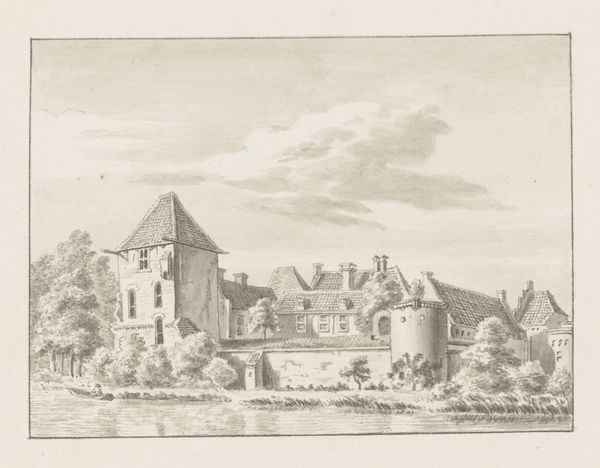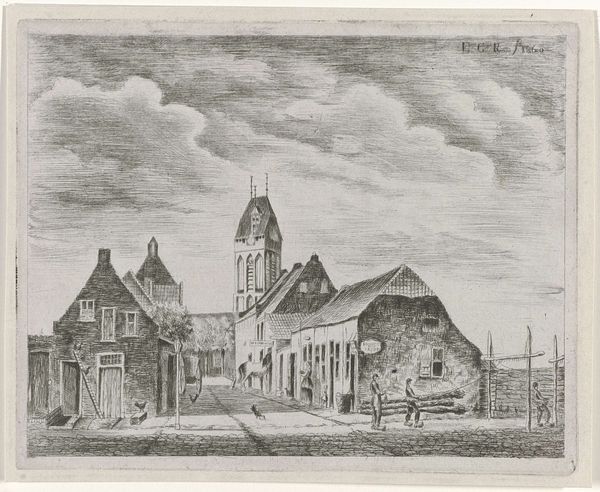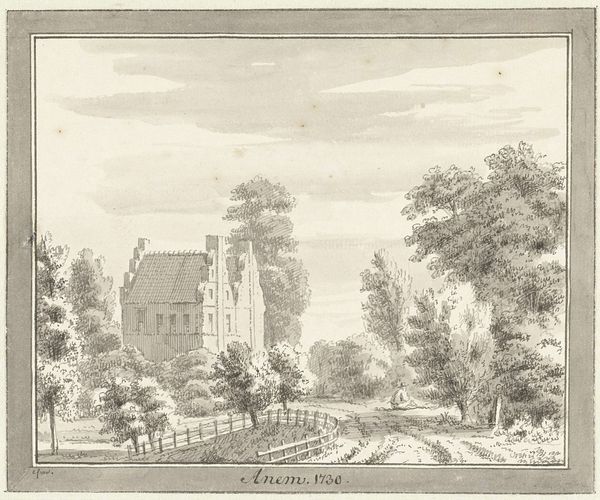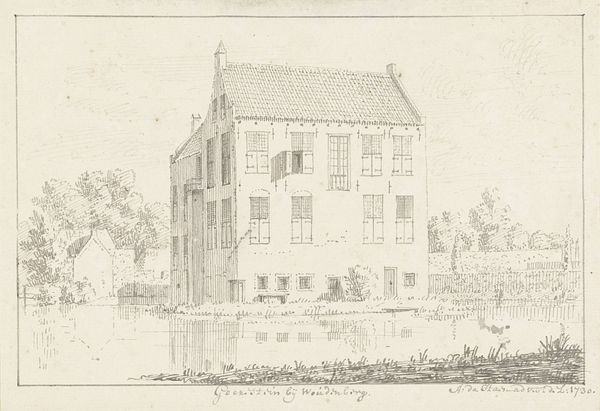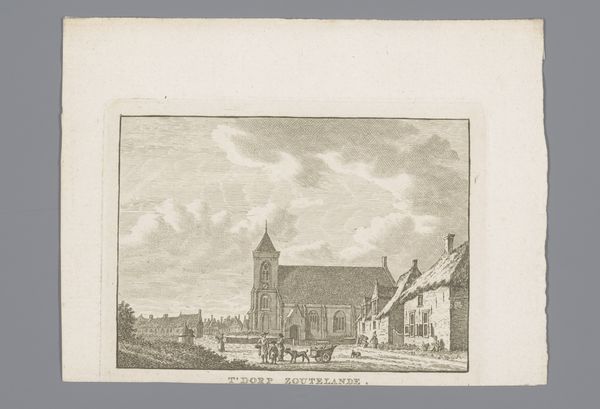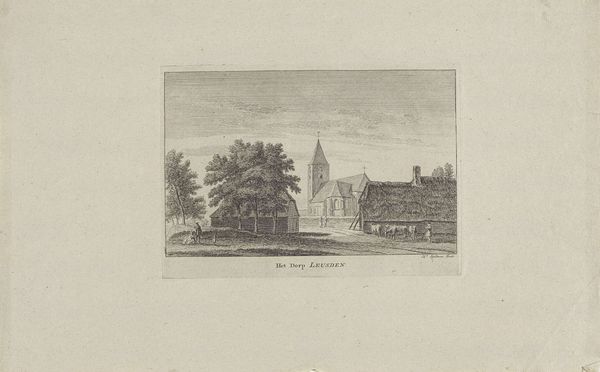
drawing, print, etching, paper, architecture
#
drawing
#
baroque
# print
#
etching
#
pencil sketch
#
landscape
#
etching
#
paper
#
cityscape
#
architecture
#
realism
Dimensions: height 151 mm, width 218 mm
Copyright: Rijks Museum: Open Domain
Curator: This is Hendrik de Winter's "De Linschoterpoort te Oudewater," created around 1745. It's a delicate drawing and etching on paper, currently held in the Rijksmuseum. Editor: It has a really quiet, contemplative feel. The light is soft and the scene seems still, despite the figures present. There’s a wonderful texture achieved by the etching. Curator: De Winter was clearly interested in the mechanics of representing architecture and landscape. Note the precision in the rendering of the brickwork, the angle of the bridge, the ripples on the water... and of course the linear structure achieved by using etching. It almost feels like a blueprint, highlighting the production and accessibility of art as document. Editor: Absolutely. And if we think about Oudewater at the time, this gateway wasn’t just an aesthetic feature. It controlled access, impacting trade, movement of people, and therefore power within the city. De Winter has depicted a critical piece of municipal infrastructure. Curator: How do you think its placement within the Rijksmuseum now influences its reception? Does its status as "art" obscure its more practical origins and function? Editor: That’s a crucial question. Displaying it distances us from its original function, perhaps. The etching, initially produced for a relatively broad circulation, is now a precious object behind glass. But the etching itself perhaps suggests an attempt by De Winter to democratize representation of his setting. Curator: Good point, it would have been much more available through printing. There's such care taken in detailing how the architecture works and suggesting a method that enabled mass production and accessibility of a representation of a common site, yet elevated in material choice and technical handling. It feels both pragmatic and artful. Editor: I'm also drawn to the people depicted. They're rendered so subtly, but their presence animates the scene and hints at the social life interwoven with the gate’s function. What was their role in relation to that structure? I can see them both passing in, and reflecting upon its relevance to the place. Curator: A scene like this brings to mind so many questions about art, labor, and how we ascribe value to them. Editor: Precisely. This simple yet evocative image offers rich insights into art, politics, and social infrastructure of the 18th century.
Comments
No comments
Be the first to comment and join the conversation on the ultimate creative platform.
